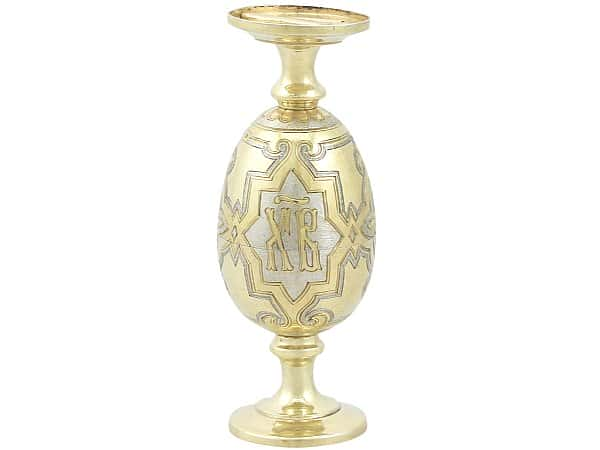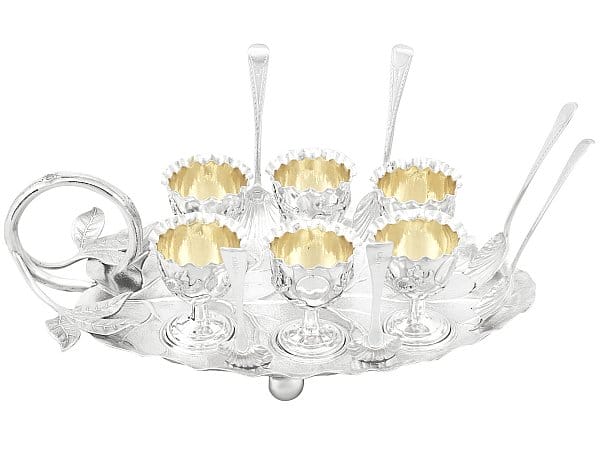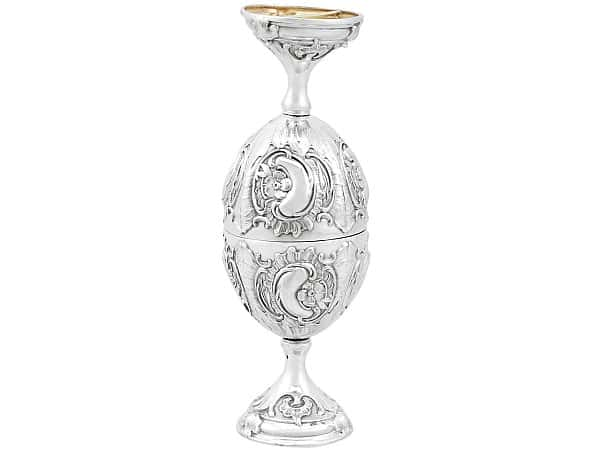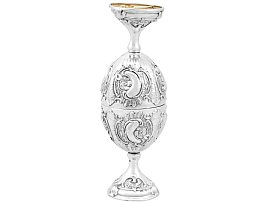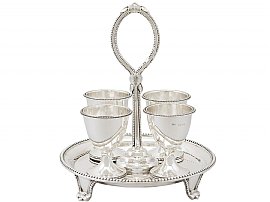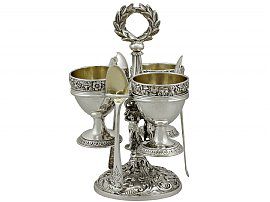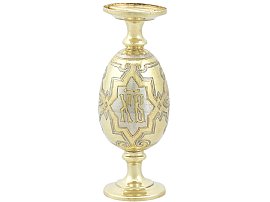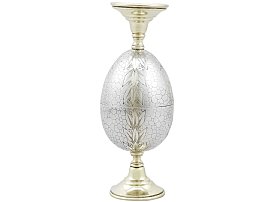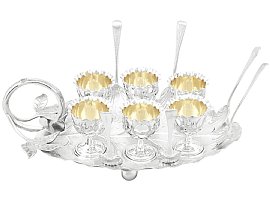Egg Boiler / Cobbler History
Humans have eaten eggs for roughly six million years. In that time, the various methods of cooking eggs have evolved significantly. One such evolution is the egg coddler. This device, first seen in the late 18th century, allowed users to boil multiple eggs simultaneously, ensuring they remain hot and can be served together.
Today, this creation is a unique collectable for those with a passion for silver antiques.
What Is an Egg Boiler / Egg Coddler?
The egg coddler is a device that allows eggs to be cooked in a variety of ways. A full egg coddler set features a container, an internal frame, and a burner. The container was large and often egg shaped. It had a removable lid which allowed the internal frame to be removed with ease. Later examples of the egg coddler featured varying degrees of ornamentation. Often, finials featuring chickens, swans, and other birds were used. Equally, the ‘shell’ of the container was decorated with etchings of farmyard scenes.
The internal frame was similar in structure to an antique cruet set. It had rings that usually held up to four eggs, although some larger models held six. The eggs could be placed in this holder and then lowered into the container. The openwork legs of the container usually featured a small holder for the burner. Within the burner, a methylated spirit tablet could be placed and set ablaze. Typically, this was not enough to boil the water, and was instead intended to maintain a consistent heat.
Boiling water was poured into the container, cooking the eggs over time. Antique silver egg coddlers were useful because they could be used to cook eggs in a range of ways. The method described above prepared boiled eggs. With less water, the eggs could also be steamed, with the lid of the container trapping the steam and quickening the process. Equally, the internal frame could be removed and the egg cracked into the container. This way, it was also possible to prepare poached eggs.
The biggest appeal of the egg coddler was that it ensured the eggs were cooked in synchronicity, and it kept them warm until they were ready to serve. Coddlers of the described design were used often at hotels and in fine dining establishments, allowing the eggs to be prepared and served directly at the table.
History of the Egg Coddler
It is uncertain who first created the egg coddler, or where it originated. What is certain is that, by the mid-1800s, egg coddlers were popular around Europe. The majority of these pieces were made from electroplated silver, with few extant sterling silver examples. Influential silversmiths such as Mappin & Webb, William Hutton, and Walker & Hall were forerunners in the production of egg coddlers. Finding a complete set from widely-collectable makers such as these is difficult. However, it is possible to put a set together.
Walker & Hall, for example, operated out of Sheffield and provided pieces to markets throughout the UK. They produced a great number of egg coddlers, and so finding individual pieces with the Walker & Hall marks is possible. Most often, it is the burner that is missing from a complete set. Fortunately, those looking to use an egg coddler rather than display it can still utilise its functions without the burner in place.
Modern-day coddlers of different kinds also serve a similar purpose. The Malaysian-created automatic egg boiler follows a similar function. Eggs are placed into a plastic container with a pierced base and a separate chamber beneath it. Boiling water is poured in, and the eggs cook as the water drains into the chamber. The eggs can be cooked to different levels of hardness depending on how much water is poured into the container.
In the early 1900s, the antique silver egg coddler was associated with the sophistication and glamour of fine dining in the previous era. As time went on, silverware became less affordable. With the rise of plastics and glass homeware, the mid-century equivalent of an egg coddler was created. Usually made from borosilicate, these glass coddlers would be buttered to add flavour, then the egg could be cracked an added. The coddler is then placed in a heated water bath.
Although these other methods can create coddled eggs or boiled eggs, they have less diversity than the traditional antique egg coddler. The antique pieces are still sometimes passed down through generations, and anyone in possession of a full set is often the envy of collectors.
